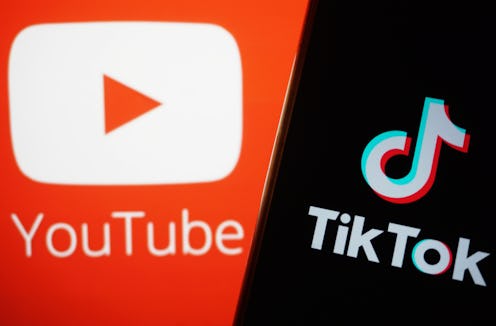Beauty
How TikTok Replaced YouTube As The Internet's #1 Beauty Queen
And how BeautyTube can make a comeback.

Beauty is currency and can enhance one’s social capital — and the way we consume digital beauty content constantly evolves and changes. It seems like TikTok is largely the platform of choice for beauty content creators (or “gurus,” as they used to be called) in 2022, producing one viral makeup trend after another and influencing beauty lovers to purchase certain products. But there was a time when BeauyTube held a tight grasp on the beauty influencer scene — some would argue that it’s where it was born.
With the rise of lifestyle vlogging and social commentary, it seems like YouTube’s beauty content has taken a back seat to the short form videos found on TikTok. The great thing about BeautyTube, however, is that it acts as a visual archive where we can see trending looks and tutorials from the late 2000s, 2010s, now the 2020s via tutorials from trailblazers like Jackie Aina, Michelle Phan, and more.
Beauty theorist and content creator Mikai McDermott notes that thanks to YouTube’s time capsule of makeup tutorials, you’re able to create a look from “any time in the 21st century.” In addition to this, McDermott says that the beauty community on Youtube hasn’t left nor was it overtaken by TikTok, rather that both platforms serve completely different purposes in terms of beauty content. “Anyone can go viral on Tiktok but with Youtube, you need to nurture your community. BeautyTok is a new phenomenon as a result of our growing relationship with social media.”
Teni Panosian, creator of the skin care line Monday Born and an OG beauty guru who has been creating YouTube tutorials for a decade, chimes in. “It’s normal that BeautyTube has changed and that creators and the audience have taken a step back to explore other channels,” she says. On the other hand, Panosian admits to being eager to return to YouTube. TikTok is a refreshing change that she personally enjoys but she also questions the quality of the content too. “Making videos on BeautyTube was an investment, a commitment, and — I don’t get the same feeling from BeautyTok.”
Aesthetician Alicia Lartey specifically notes that the danger of skin care-related content on TikTok is that it’s difficult to verify skin care knowledge on the platform compared to detailed Youtube videos. The rise of SkinTok and increased interest in skin care interest can be attributed to lockdown in 2020, when Lartey says there was a “hyper-focus on skin.” McDermott agrees that it was a revealing time. “[It ] revealed how little we looked after our skin,” she says. “We weren’t really concerned about what goes underneath the layers of makeup.”
Gen Z (a large sector of TikTokers) has also been credited with being more eco-conscious and hyperaware of the effects of climate change, whereas YouTube’s beauty gurus were known for extravagant hauls and lengthy makeup tutorials that required tons of products. But that doesn’t mean that TikTok’s consumers and influencers are necessarily starting to interrogate their personal beauty practices and their compatibility with our environment.
For McDermott, she believes that younger generations are still consuming makeup in the way that OG beauty content creators have — just in a different way. “The dramatic full glam look that KKW popularized in the 2010s has [faded,] but people have found new ways to create their own looks and aesthetics with similar products,” she says. The “clean girl” aesthetic might not require layers of foundation, five different concealers, and eyelash extensions but there is some consumerism involved in getting that very “minimalistic” look. “We’re consuming more beauty than ever, because of skin care and makeup products.”
Lartey agrees. “TikTok is the SHEIN of beauty,” she says. “Everyone has everything because their favorite guru recommended it, even when they don’t need it.” (One look at the “things TikTok made me buy” hashtag confirms that she’s correct.) She emphasizes that beauty will always be wasteful as a lot of things are single use because of hygiene and regulatory frameworks. Likewise, Panosian admits that as a content creator, she asked some brands to stop sending out PR mailers in a bid to reduce excessive consumerism. She, too, believes that overconsumption is more present on BeautyTok.
So, can BeautyTube make a comeback? “Everything happens in a cycle,” Panosian reflects. “We grow tired of one thing and move on to the next.” She poses the question, “How much longer can we possibly be so enthusiastic about seven second videos? I’m very much looking forward to long form coming back and returning to a more meaningful connection. Right now, it’s so much about being entertained. I miss connecting.”
This article was originally published on